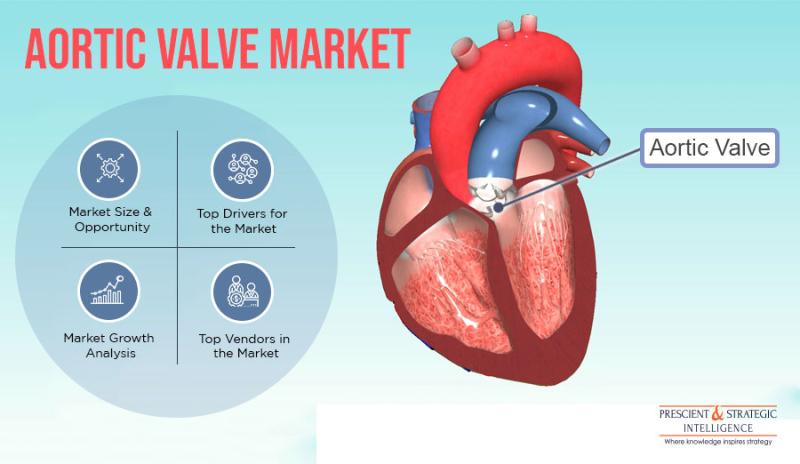Factors such as increasing prevalence of valvular diseases and rising number of initiatives for imparting awareness regarding valve replacement are expected to supplement the aortic valve market growth at a CAGR of 13.2% during the forecast period (2020–2030). At this rate, the market’s value will increase from $7,568.3 billion in 2019 to $29,146.9 million by 2030.
Browse In-depth Aortic Valve Market Revenue Forecast Report
Currently, the market is witnessing the trend of product launches. Manufacturing companies are continuously focusing on developing new and improved products to meet the spurring demand for aortic valves, across the world.
Aortic regurgitation and aortic stenosis are the most common valvular diseases. Rheumatic heart disease (RHD) is the most common cause of aortic regurgitation. According to the World Health Organization (WHO), nearly 33 million people around the globe are affected by RHD that accounts for around 2% of the population suffering from cardiovascular diseases (CVDs). These conditions mostly affect the old people. Thus, booming geriatric population will fuel the consumption of aortic valves in the coming years, which, in turn, will drive the market growth.
Aortic valves are available as mechanical and tissue/biological valves. With constant developments in technology and rapid demand for valves from the ageing population, medical professionals are primarily opting for biological or tissue aortic valves. These valves are implanted in the human body either through open surgery or minimally invasive surgery (MIS). The surgeons are preferring MIS implantation procedure, as it causes lesser trauma to the patients and stimulates the recovery process, in comparison to open-heart surgeries.
According to P&S Intelligence, Europe generated the maximum demand for aortic valves in 2019 and it will retain its dominance in future, due to the existence of an advanced healthcare system, growing elderly population, and increasing incidence of chronic and lifestyle-associated diseases. Furthermore, the European market is expected to witness the fastest growth during the forecast period. This can be due to the rising cases of aortic stenosis in western European nations. Doctors generally recommend transcatheter aortic valve replacement (TAVR) and surgical valve replacement treatments for aortic stenosis.
Thus, intensifying awareness among people and healthcare professionals regarding aortic valves and replacement procedures will fuel the adoption of these valves in the future.






